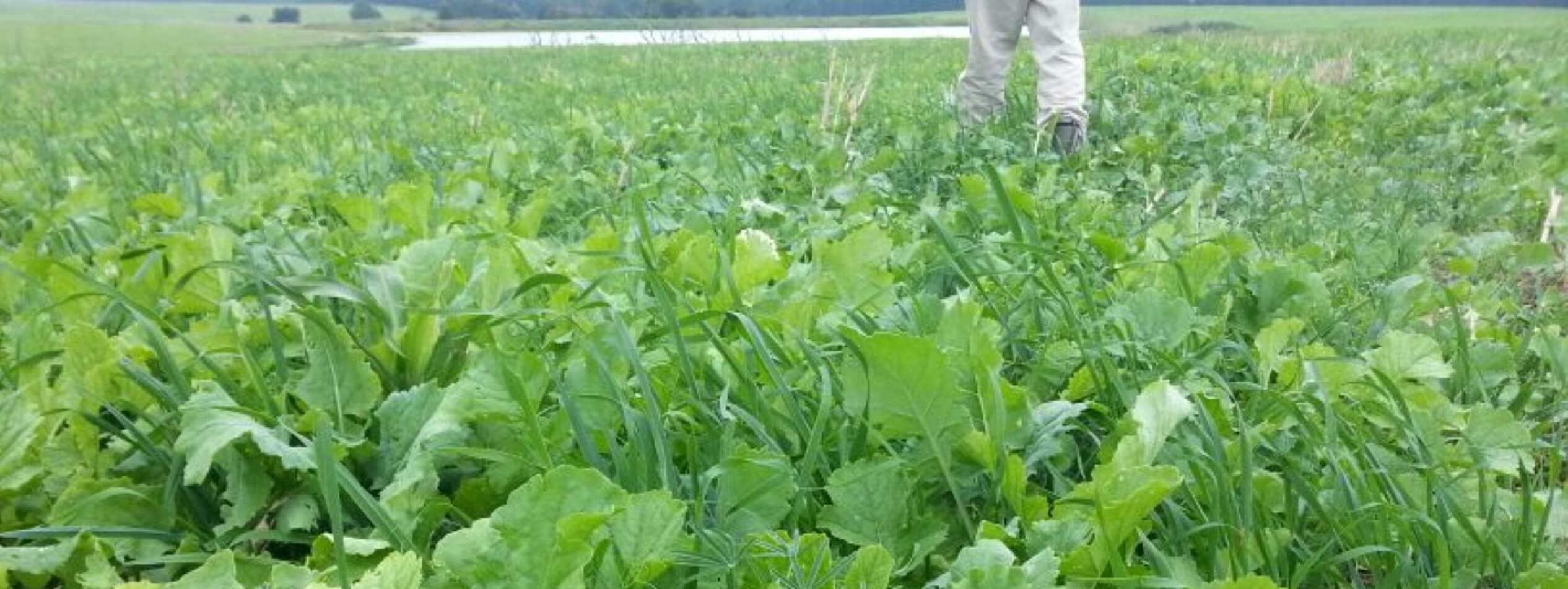I have been asked by a few farmers whether growing crops, such as sorghum and maize, add carbon to the soil. My response has always been, yes, but not to the same extent as grazed pastures or cover crops. Another associated question that has come up is how to reduce chemical fertiliser inputs on these crops. A good way would be to increase carbon and regenerate the soil. But if growing crops doesn’t increase carbon much, then what is there to do?
There is no way to improve soil and reduce inputs by growing crops the conventional way. Unless a shift is made from these practices, the results will stay the same.
The problem
There is no way to improve soil and reduce inputs by growing crops the conventional way. Preparing the soil through heavy tillage and high fertilisation and pesticides use has been the conventional approach to cropping. Although this has resulted in decent food production, it has also led to soil degradation, water pollution, atmospheric pollution and biodiversity loss. Unless a shift is made from these practices, the results will stay the same. As the soil degrades more, more effort and inputs (i.e. money) will be required to grow productive crops.
The solution
Conservation agriculture has been proposed as an alternative to conventional agriculture since the 1970’s. The three principles of conservation agriculture are minimum soil disturbance, keeping the ground covered with crop residues and cover crops, and planting a diversity of crops. It is imperative to implement all these principles with the goal of improved soil health and increased efficiency and profitability.
One of the issues with research done comparing conservation agriculture to conventional methods is that not all three conservation agriculture principles are implemented. The focus of this blog is on the cover crops part but noting the fact that all three principles are imperative.
Cover crops
Cover crops are crops that are planted with the goal of protecting and restoring the soil.
There is a lot of evidence, both anecdotal from farmers and research-based, which shows that cover crops increase soil carbon levels, restore soil life and improve soil structure. The well-understood, and often-quoted reason is that cover crops included a large mass and diversity of roots which pump carbon into the soil through exudates and decomposition, once the cover crop has been terminated.
The interesting thing which I learned recently, and which is the answer to the question I referenced in the beginning, is why grain crops don’t have the same effect. In theory, grain crops grow over a season, like cover crops. They develop strong, healthy roots like cover crops. These roots remain in the soil after harvesting the crop, like cover crops. So why don’t they have the same effect?
Aside from the way these crops are grown conventionally, i.e. with lots of disturbance and chemicals, there is another reason. Rather than trying to re-write what I read, I will quote from David Montgomery’s book, Growing a Revolution:
“All this points to a big problem with conventional grain monocultures. As a crop begins to grow, it takes time before the plants build up enough photosynthetic carbon to produce exudates. And when the crop becomes reproductive, root exudates shut off as the plant shunts resources into seed production. So there is only a four- to five-week period when grains push exudates into the soil. That just isn’t enough time to pump out much carbon. So grain crops don’t contribute a lot to building up soil carbon. To dramatically increase soil carbon, cover crops are needed to push exudates into the soil over more of the year.”1
Hope for the future
I find this fascinating. So much is said about the negative impact of agriculture, but I am filled with hope. I have written several blogs referring to David Montgomery’s book, and I would highly recommend it. It provides many examples of farmers who have shifted from conventional practices, adopting the principles of conservation agriculture and other innovative practices to bring their soil back to life. From large-scale crop and livestock farmers in the USA and Canada, to small-scale crop and vegetable farmers in Ghana and Costa Rica, there are so many viable alternatives for farmers than the conventional approach. Trace & Save works with many of these farmers in South Africa as well.
Cover crops are one of many mechanisms that can help shift agriculture from destructive and sick to regenerative and healthy.
Reference
- Montgomery DR. 2017. Growing a revolution: Bringing our soil back to life. WW Norton, New York. p 228.
- A carbon footprint assessment for pasture-based dairy farming systems in South Africa - 2024-02-07
- What progress have farms participating with Trace & Save made over the past 10 years? - 2023-09-06
- Carbon footprint reduction over time: Lessons from pasture-based dairy farms in South Africa - 2023-09-04

